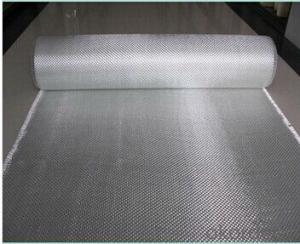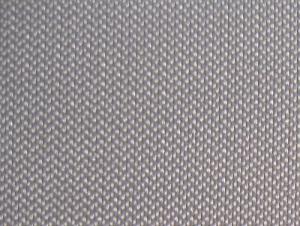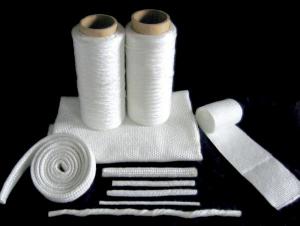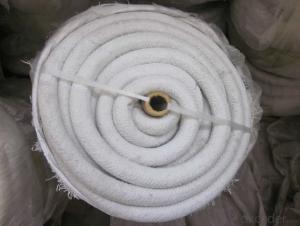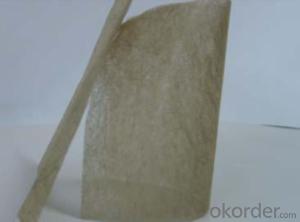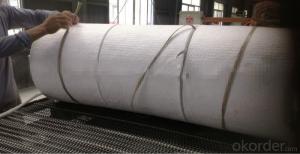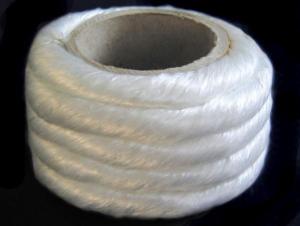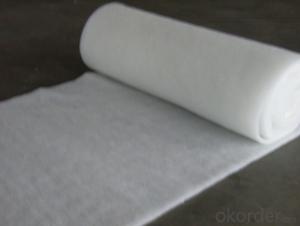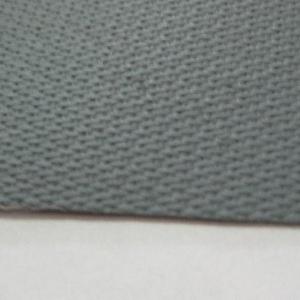Glass Fiber Woven Roving Cloth Fabric
- Loading Port:
- Qingdao
- Payment Terms:
- TT OR LC
- Min Order Qty:
- 500 m
- Supply Capability:
- 3000 m/month
OKorder Service Pledge
OKorder Financial Service
You Might Also Like
Product description
1.Glass woven roving are bidirectional fabric made by direction roving in plain weave pattern.
2.Compatible with unsaturated polyester ,vinyl resin ,epoxy resin .
3.Applicable for hand lay-up ,winding and compress molding process ,suitable for manufacturing tank ,boat ,automobile parts ,and other FRP product
Products advantage
1.Consistent thickness and excellent surface treatment .
2.Rapid impregnating and good compatibility with resin.
3.Uniform tension , high dimensional stability and easy to operate.
4.Good mechanical properties and high strength
5.Factory produce and product ISO certificated
1 Muti-resin-compatible
2 Easy shape adaptation
3 Easy impregnation
4 Good transparency
5 Excellent mechannical properties
product code | area weight | density warp*weft | tex | combustible content |
EWR200 | 200 | 4.6*4.6 | 200*200 | 0.4-0.8 |
EWR 270 | 270 | 4.6*4.1 | 300*300 | |
EWR360 | 360 | 3.2*1.8 | 600*900 | |
EWR400 | 400 | 3.6*3.2 | 600*600 | |
EWR450 | 450 | 3.2*2.8 | 600*900 | |
EWR500 | 500 | 2.2*2.0 | 1200*1200 | |
EWR580 | 580 | 2.6*2.2 | 1200*1200 | |
EWR600 | 600 | 2.6*2.4 | 1200*1200 | |
EWR800 | 800 | 2.0*1.6 | 2400*2400 |
- Q:How do glass fiber textiles perform in terms of flexibility?
- Glass fiber textiles possess exceptional flexibility, a quality attributed to the thin and lightweight nature of glass fibers. As a result, these textiles can be easily manipulated through bending, twisting, or folding, all while maintaining their original form and structural integrity. This remarkable flexibility allows for their wide range of applications and adaptability. They can seamlessly integrate into composite materials, like laminates, to enhance both flexibility and mechanical properties. Moreover, glass fiber textiles exhibit remarkable resilience, enabling them to endure repeated bending or stretching without fracturing or losing their original shape. This outstanding feature makes them highly suitable for industries that prioritize flexibility, such as aerospace, automotive, and sports. In summary, glass fiber textiles provide a superior level of flexibility, making them the favored choice for numerous applications.
- Q:Can glass fiber textiles be used in the production of tents and awnings?
- Yes, glass fiber textiles can be used in the production of tents and awnings. Glass fiber textiles provide strength, durability, and resistance to various weather conditions, making them suitable for outdoor applications like tents and awnings. They offer excellent insulation, are lightweight, and can withstand high temperatures, making them a popular choice in the manufacturing of these products.
- Q:How do glass fiber textiles compare to carbon fiber textiles in terms of strength?
- Glass fiber textiles are generally not as strong as carbon fiber textiles. Carbon fiber textiles have a higher tensile strength, meaning they can withstand more force or tension without breaking. This makes carbon fiber textiles a preferred choice in applications where strength is a critical factor, such as aerospace or high-performance sports equipment. However, glass fiber textiles still offer a good level of strength and are commonly used in various industries, particularly where cost-effectiveness is important.
- Q:Can glass fiber textiles be used in the production of curtains and blinds?
- Yes, glass fiber textiles can be used in the production of curtains and blinds. Glass fiber textiles are lightweight, durable, and have excellent heat and sound insulation properties, making them a suitable choice for curtains and blinds. They can also be woven into various patterns and designs, offering a wide range of options for aesthetic purposes. Additionally, glass fiber textiles are resistant to fading, moisture, and mildew, making them a practical and long-lasting choice for window treatments.
- Q:Can glass fiber textiles be used in electronic components?
- Yes, glass fiber textiles can be used in electronic components. Glass fiber textiles are known for their high strength, durability, and excellent thermal and electrical insulation properties. These characteristics make them suitable for various applications in the electronics industry. Glass fiber textiles can be used as reinforcement materials in printed circuit boards (PCBs), providing mechanical stability and enhancing the overall performance of the PCB. They can also be used as insulation materials for electrical wires and cables, protecting them from external influences and improving their safety and reliability. Additionally, glass fiber textiles can be used as substrates for flexible electronic devices, such as flexible displays or wearable sensors, due to their flexibility and lightweight nature. Overall, glass fiber textiles offer numerous advantages for electronic components and are widely used in the industry.
- Q:Can glass fiber textiles be used in spacecraft components?
- Yes, glass fiber textiles can be used in spacecraft components. Glass fiber textiles, also known as fiberglass, have several properties that make them suitable for use in space applications. Firstly, glass fiber textiles have excellent strength-to-weight ratio, which is a crucial factor when designing lightweight spacecraft components. The high strength of the fibers allows them to withstand the extreme conditions of space travel, including the intense vibrations during launch and the vacuum of space. Secondly, glass fiber textiles have excellent thermal insulation properties. In space, temperatures can vary drastically, ranging from extreme cold to intense heat. Glass fiber textiles can provide insulation against these temperature fluctuations, helping to protect the spacecraft components and maintain their functionality. Additionally, glass fiber textiles are known for their resistance to corrosion and chemicals. This property is essential in space, where components may be exposed to different types of fuels, oxidizers, and other potentially corrosive substances. Moreover, glass fiber textiles are electrically insulating, which is essential for the safety and proper functioning of spacecraft components. This property helps to prevent electrical shorts and interference, ensuring the reliability of the spacecraft systems. Lastly, glass fiber textiles are relatively easy to manufacture and can be molded into complex shapes, making them versatile for various spacecraft components. They can be used in the construction of satellite structures, insulation panels, antenna reflectors, and other critical parts. In conclusion, glass fiber textiles can indeed be used in spacecraft components due to their high strength-to-weight ratio, excellent thermal insulation properties, resistance to corrosion and chemicals, electrical insulation, and versatility in manufacturing.
- Q:How do glass fiber textiles resist static electricity?
- Glass fiber textiles, unlike materials like cotton or wool, do not easily accumulate static charges due to their non-conductive nature. This is because glass, being primarily composed of silica, is a poor conductor of electricity. When glass fiber textiles come into contact with another object, friction can generate static electricity. However, the non-conductive nature of the glass fibers prevents the electric charge from building up on the textile's surface. Instead, the charge is quickly dispersed or grounded, preventing static electricity from accumulating. Furthermore, glass fiber textiles have low moisture absorption properties, which further reduces their susceptibility to static electricity. Moisture aids in conducting electrical charges, so the limited moisture absorption of glass fibers inhibits the formation and persistence of static charges. Overall, the non-conductive nature and low moisture absorption properties of glass fiber textiles make them highly resistant to static electricity. This makes them suitable for applications where controlling static charges is crucial, such as in electronics manufacturing or environments with flammable materials.
- Q:How is glass fiber textile used in the aerospace industry?
- The aerospace industry extensively utilizes glass fiber textile for various purposes because of its unique characteristics. One of its primary applications in this field is in the production of composite materials. These composites find utility in constructing aircraft, spacecraft, and other aerospace components. Glass fiber textile is renowned for its exceptional strength-to-weight ratio, making it an ideal material for aerospace applications where reducing weight is crucial. It is both lightweight and remarkably sturdy, enabling engineers to design and build efficient and durable aircraft. By utilizing glass fiber composites, the weight of aircraft can be significantly decreased, resulting in improved fuel efficiency and increased payload capacity. Additionally, glass fiber textiles possess remarkable resistance to corrosion, chemicals, and extreme temperatures. This makes them suitable for use in the aerospace industry, where aircraft encounter various environmental conditions during flight. Glass fiber composites can endure high temperatures, making them ideal for parts subjected to engine-generated heat or atmospheric re-entry. Furthermore, glass fiber textiles provide excellent electrical insulation properties. This makes them suitable for applications where minimizing electrical conductivity is necessary, such as in electronic components and wiring systems. By incorporating glass fiber textiles in these applications, the risk of electrical interference or short circuits can be mitigated. Moreover, glass fiber textiles serve as thermal insulation in the aerospace industry. They are often used as a reinforcing material in thermal protection systems, which are designed to safeguard spacecraft during atmospheric re-entry or high-temperature environments. Glass fiber composites can withstand the extreme heat generated during re-entry, enabling the safe return of spacecraft to Earth. In conclusion, glass fiber textile is extensively employed in the aerospace industry due to its high strength-to-weight ratio, resistance to corrosion and extreme temperatures, excellent electrical insulation, and thermal insulation properties. It is utilized in the production of composite materials, providing lightweight and durable solutions for aircraft, spacecraft, and various aerospace components.
- Q:Can glass fiber textile be used in 3D printing?
- Yes, glass fiber textile can be used in 3D printing. It is often combined with other materials, such as thermoplastics, to enhance the strength and durability of printed objects. The glass fiber reinforcement adds stiffness and resistance to deformation, making it suitable for applications that require high mechanical performance.
- Q:Standard for testing fabric thickness?
- The sample shall be at least 150mm of the overall length of the cloth at the beginning and end of the fabric roll, not less than 500mm.
1. Manufacturer Overview |
|
|---|---|
| Location | |
| Year Established | |
| Annual Output Value | |
| Main Markets | |
| Company Certifications | |
2. Manufacturer Certificates |
|
|---|---|
| a) Certification Name | |
| Range | |
| Reference | |
| Validity Period | |
3. Manufacturer Capability |
|
|---|---|
| a)Trade Capacity | |
| Nearest Port | |
| Export Percentage | |
| No.of Employees in Trade Department | |
| Language Spoken: | |
| b)Factory Information | |
| Factory Size: | |
| No. of Production Lines | |
| Contract Manufacturing | |
| Product Price Range | |
Send your message to us
Glass Fiber Woven Roving Cloth Fabric
- Loading Port:
- Qingdao
- Payment Terms:
- TT OR LC
- Min Order Qty:
- 500 m
- Supply Capability:
- 3000 m/month
OKorder Service Pledge
OKorder Financial Service
Similar products
New products
Hot products
Related keywords
